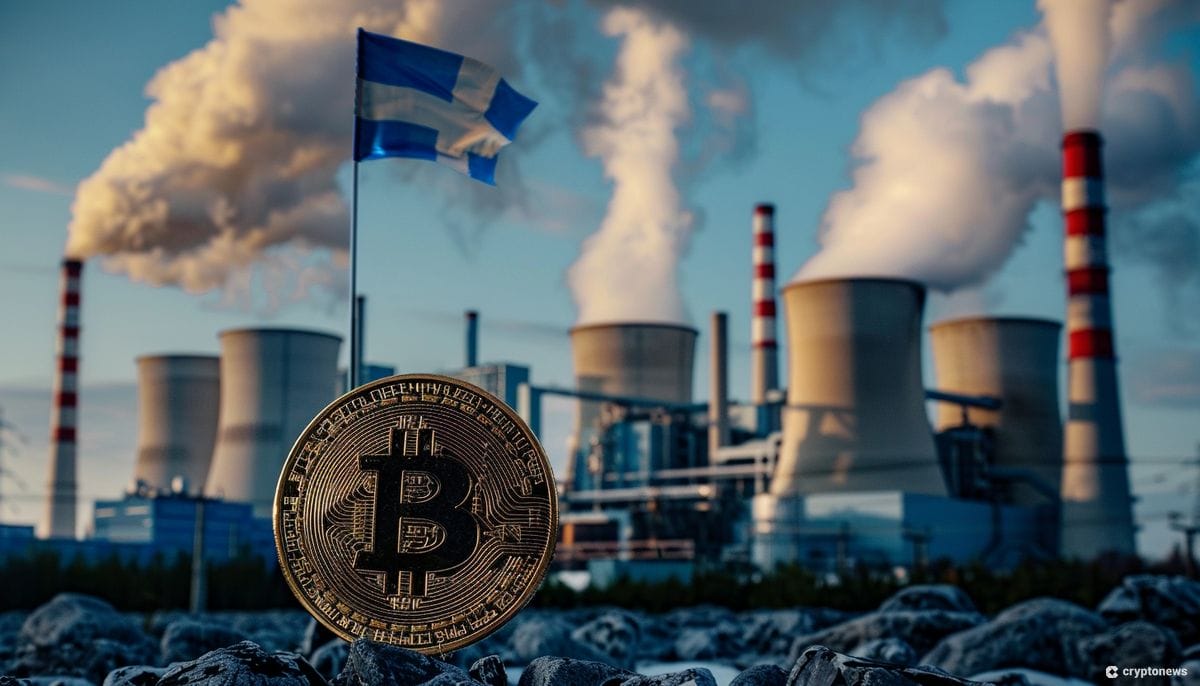
In Finland, a groundbreaking project has been initiated that leverages the process of mining Bitcoin to generate heat for residential homes during the chilly winters. Hashlabs Mining, a Bitcoin mining infrastructure firm, is at the forefront of this innovative approach, integrating cryptocurrency mining with traditional heating systems.
The project utilizes a hydro-cooled ASIC mining device, the WhatsMiner M63S, to produce heat that is then distributed via the Finnish district heating system. This system effectively transports heat from a centralized source through insulated pipes to various residential buildings. The initiative allows households to directly benefit from the heat generated by industrial-scale Bitcoin mining operations.
Jaran Mellerud, co-founder of Hashlabs Mining, shared insights on X on April 23 about the dual utility of these mining operations, stating, “With the help of industrial consumers like Bitcoin miners, Finland can increasingly use its massive nuclear power plant to produce heat.”
Technical Aspects and Environmental Impact
The WhatsMiner M63S device is specifically designed to maximize heat output, achieving water temperatures of up to 70 degrees Celsius. This high-temperature water is an ideal solution for district heating needs, potentially replacing less sustainable heat sources currently used in Finland, such as biomass, peat, and hard coal.
In 2019, wood fuels dominated Finland’s district heating production, accounting for 35% of the heat generated, followed by hard coal at 18%, and peat at 15%, according to Statistics Finland. The integration of Bitcoin mining into this heating infrastructure offers a promising shift towards more sustainable and efficient energy use.
Broader Implications and Future Potential
The concept of repurposing the heat generated from Bitcoin mining is gaining traction globally, as miners seek environmentally-friendly ways to offset the energy-intensive nature of cryptocurrency mining. Innovative applications include using excess heat for swimming pools, beef jerky dehydration, and timber drying.
In June 2023, a New York bathhouse even reported using the residual heat from Bitcoin mining rigs to power its facilities, showcasing the versatility and potential of this technology.
Challenges and Opportunities
Despite the promising aspects of this technology, the integration of Bitcoin mining with residential heating presents challenges. The fluctuating profitability of Bitcoin mining, regulatory hurdles, and the need for substantial initial investments are significant barriers. However, the potential environmental benefits and cost savings could serve as strong incentives for further adoption and development.
The Finnish project not only demonstrates the innovative use of technology in sustainable practices but also highlights the potential for significant shifts in energy consumption patterns. As the technology matures and scales, it could offer a replicable model for other regions with similar infrastructure.
By harnessing the power of Bitcoin mining, Finland is not just advancing its technological footprint but also contributing to a more sustainable and energy-efficient future. This initiative could serve as a blueprint for other nations looking to combine technological innovation with environmental sustainability.
As the world increasingly focuses on sustainable and innovative energy solutions, projects like Finland’s Bitcoin-powered heating system represent a forward-thinking convergence of technology and environmental stewardship. The ongoing development and potential scaling of such projects could significantly impact how societies produce and consume energy in the future.
Featured image credit: Harvey Hunter via CryptoNews
